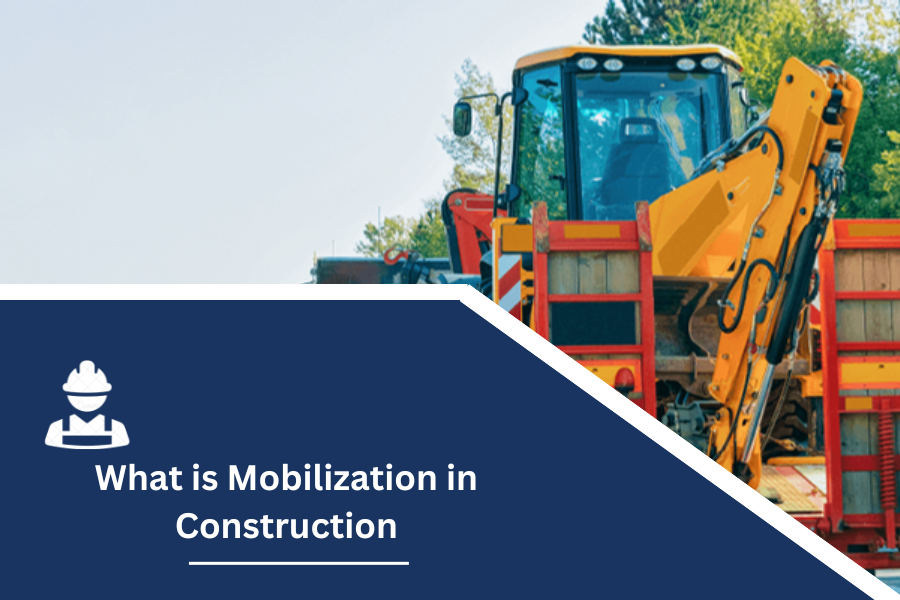What is Mobilization in Construction: Streamlining Success
Table of Contents
In the dynamic realm of construction, mobilization stands as a crucial phase that sets the tone for project success. This article dives deep into the nuances of mobilization, unraveling its significance, key components, planning strategies, challenges, success stories, and future trends.
I. Introduction
Definition of Mobilization in Construction
Mobilization refers to the strategic planning and execution of activities undertaken to prepare a construction site, allocate resources efficiently, and streamline the commencement of a project. It serves as the initial phase, laying the foundation for a seamless construction journey.
II. Importance of Mobilization
Efficient Resource Allocation
In mobilization, precise resource allocation is paramount. From equipment deployment to workforce organization, efficient planning ensures that resources are optimally utilized.
Time Management
Timely mobilization accelerates project timelines. A well-organized mobilization phase sets the pace for subsequent construction activities, contributing to overall project efficiency.
Cost-Effectiveness
Effective mobilization directly impacts project costs. Proper planning minimizes downtime, reduces unforeseen expenses, and enhances the cost-effectiveness of the construction process.
III. Key Components of Mobilization
Equipment Deployment
Strategic deployment of construction equipment is a cornerstone of mobilization. Ensuring that the right tools are in the right place at the right time lays the groundwork for a successful project launch.
Workforce Organization
Mobilization involves orchestrating human resources efficiently. Proper workforce organization guarantees that skilled personnel are available when needed, enhancing overall project productivity.
Site Preparation
Thorough site preparation is integral to mobilization. From clearing the land to ensuring a safe working environment, meticulous planning at this stage prevents delays and complications during construction.
IV. Mobilization Planning
Pre-Construction Phase
Mobilization planning begins in the pre-construction phase. This involves detailed assessments of project requirements, resource availability, and potential challenges, setting the stage for a smooth transition into active construction.
Project-Specific Considerations
Each construction project is unique. Mobilization planning must consider project-specific factors, such as location, size, and complexity, to tailor strategies that align with the specific needs of the endeavor.
V. Challenges in Mobilization
Logistics
Logistical challenges can impede the mobilization process. Coordinating the delivery of materials and equipment, especially in remote or challenging terrains, requires meticulous planning and execution.
Regulatory Compliance
Adhering to regulatory requirements poses challenges during mobilization. Navigating permits, environmental regulations, and safety standards demands careful consideration to avoid legal complications.
Environmental Factors
Unforeseen environmental factors, such as adverse weather conditions, can disrupt mobilization plans. Incorporating flexibility into the planning process helps mitigate the impact of such challenges.
VI. Successful Mobilization Strategies
Collaboration and Communication
Effective collaboration and communication are pillars of successful mobilization. Open channels of communication among project stakeholders foster a collaborative environment, enhancing overall project cohesion.
Technology Integration
Embracing construction technology enhances mobilization efficiency. From project management software to advanced surveying tools, technology integration streamlines processes and improves decision-making.
Risk Management
Mobilization inherently involves risks. Successful strategies include proactive risk management, identifying potential challenges early on, and implementing measures to mitigate their impact.
VII. Case Studies
Examples of Effective Mobilization
Examining successful mobilization cases provides valuable insights. Case studies showcase projects that navigated challenges, highlighting best practices and strategies that contributed to their success.
Lessons Learned from Failed Mobilization
Analyzing failures is equally instructive. Understanding projects that faced mobilization setbacks offers crucial lessons, emphasizing the importance of thorough planning and adaptability.
VIII. Future Trends in Mobilization
Advancements in Construction Technology
The future of mobilization is intertwined with technological advancements. Robotics, artificial intelligence, and automation are expected to revolutionize construction processes, increasing efficiency and reducing manual labor.
Sustainable Mobilization Practices
Sustainability is a growing focus in construction. Future mobilization strategies will likely prioritize eco-friendly practices, minimizing environmental impact and aligning with global sustainability goals.
Innovative Project Management Approaches
Continuous innovation in project management approaches will shape the future of mobilization. Agile methodologies and adaptive strategies will become integral in navigating the complexities of construction projects.
IX. Conclusion
Recap of Mobilization’s Significance
In conclusion, mobilization stands as a pivotal phase in construction, shaping the trajectory of projects. Its importance in efficient resource allocation, time management, and cost-effectiveness cannot be overstated.
Continuous Improvement in Construction Processes
Embracing lessons from past projects, construction professionals must commit to continuous improvement. The dynamic nature of the industry requires adaptability, innovation, and a proactive approach to mobilization.
X. FAQs
1. What role does technology play in successful mobilization?
Technology enhances efficiency through tools like project management software and advanced surveying equipment.
2. How can environmental challenges be mitigated during mobilization?
Thorough planning and adaptability are crucial to address unforeseen environmental factors, minimizing their impact.
3. Why is collaboration essential for successful mobilization?
Open communication and collaboration among stakeholders foster a cohesive environment, ensuring a smooth mobilization process.
4. What are the key considerations in project-specific mobilization planning?
Tailoring strategies to the unique aspects of each project, such as location and complexity, is essential for successful mobilization.
5. How can construction projects benefit from sustainable mobilization practices?
Sustainable practices minimize environmental impact, aligning with global efforts towards eco-friendly construction.




